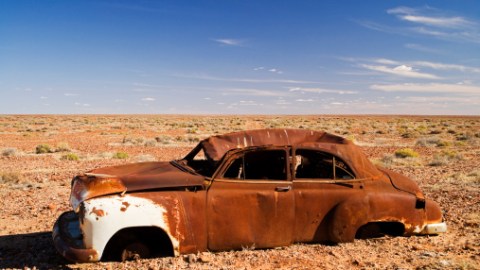Will Self-driving Cars Kill the Luxury Car, and Car Ownership Itself?

Dreams of the driverless car are primarily focused on how the robotic technology will usher in a new era of safe, seamless transportation. Less discussed is what social values, industries, and activities will be displaced or made obsolete.
Consider luxury. The luxury car of 2016 looks very different than it did ten years ago. Today, luxury in the automobile is defined more by software than horsepower. What I mean specifically is the introduction of advanced driver assistance systems in high-tech, high style and high priced vehicles — tools like adaptive cruise control, collision avoidance, lane change, turning, and parking assistance. These sorts of technologies contain the promise of making driving safer than it’s ever been. But because they come at a significant price, automakers feel more at ease lumping them in with a bevy of luxury features rather than implementing them into — and raising the cost of — their entry-level models.
In and of themselves, the current crop of driver assistance technologies may not seem overwhelmingly exciting. A warning beep from the console that tells you when you’re about to back into a light pole is plenty useful, sure, but mundane in its usefulness. Yet these sorts of tools are the baby steps, so to speak, toward more comprehensive autonomous vehicle technologies (i.e. self-driving cars), and toward social acceptance of such technologies. They are both a way for developers to refine the technology and for consumers to grow used to the idea of a computer taking over the act of driving.
The irony is that these “luxury” technologies may be the beginning of the end of the luxury vehicle itself — and the end of personal vehicle ownership altogether.
When the brightest-eyed autonomous vehicle advocates talk about self-driving cars transforming society as we know it, what they’re imagining, first and foremost, is the death of car ownership.
Here’s their vision: with self-driving cars on the roads en masse (and a smartphone in everyone’s pocket), a person simply orders a car to her door, rather than keeping one in her driveway. Parking becomes obsolete, allowing for a transformation of the design of urban spaces. The number of cars on the road massively decreases, reducing, if not eliminating, vehicle congestion and pollution. Automotive transport becomes a public utility, paid for monthly, as one pays an electric bill. Taken together, our society’s very notion of what the car is fundamentally changes.
One small part of this revolution may well be the end of the luxury vehicle. If automotive transport becomes a basic utility a la electricity, water or cable, it grows difficult to imagine people paying a premium for it. On the other hand, ride-hailing services — essentially the prototypes of the futurist vision described above — already offer luxury options like Uber Black and Lyft Premier. The question is whether our association of the automobile with status will disappear if cars no longer belong to anyone or offer the option (and for some, the joy) of personal control.
The automotive industry cannot be keen on this idea. The end of vehicle ownership would severely reduce the number of car sales in the U.S., luxury or otherwise, and shrink the automotive manufacturing sector. Vehicle sales, in part, rely on the inherent inefficiency of having your second largest purchased asset parked waiting to fulfill your next mobility desire. Shared car services keep the fleet moving and relieve individuals from the need to make an investment in parked steel and polymer. Yet automakers are pushing toward autonomous cars even as the industry likely has no desire to move toward a world with fewer personal vehicles. Perhaps they hope that the latter revolution will not accompany the former technological leap; perhaps they choose not to look that far into the very distant, very hazy future; or perhaps they simply accept that such a disruption, if it comes, will be inevitable. At any rate, though, the industry will not be destroyed by the self-driving car. It will be merely reinvented from manufacturing giants and automobile sales distributors to technology manufacturers, software distributors and mobility service providers.
The auto industry is one thing. But what about everybody else? Who might other winners and losers be in a world where the car is not king, but merely an on-demand pawn?
Consider the wide ranging number of industries that make up the automobile eco-system that will be transformed or made into a historic artifact: car dealers, insurance, car parts and repair, gas stations, state revenues from driver licensing (see my piece on from drivers to riders license) and sales taxes – even the local high school car wash fund raiser. Certainly many of these industries will continue to exist, perhaps even prosper, but in a radically different form.
The autonomous vehicle is coming. For now, most people are asking how it will change transportation – from a social and economic perspective – that is the most obvious of the many questions to be asked.
—
MIT AgeLab’s Adam Felts Contributed to this article.
Photo Credit: Getty Images/Randall Levensaler




